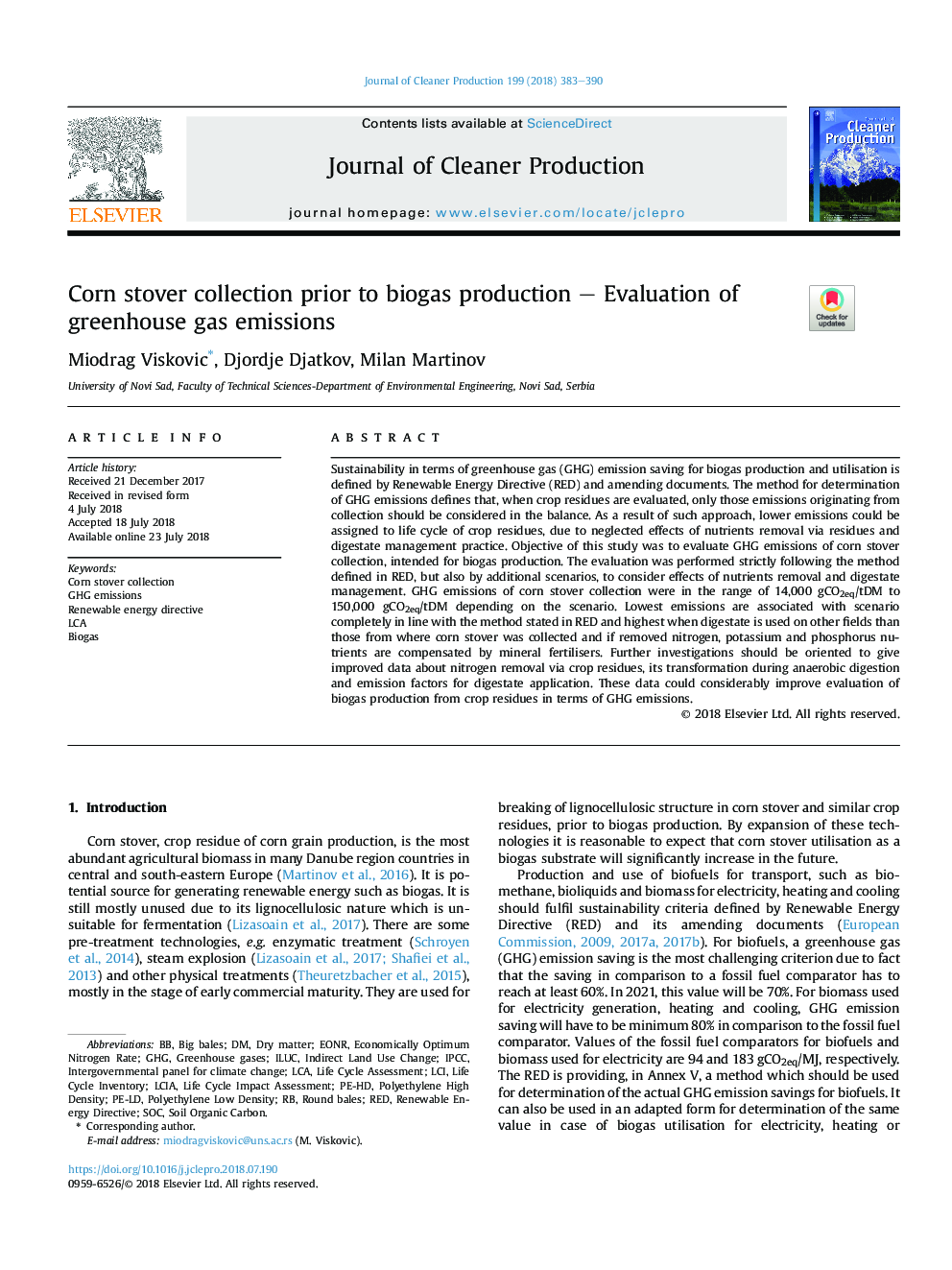| Article ID | Journal | Published Year | Pages | File Type |
|---|---|---|---|---|
| 8093178 | Journal of Cleaner Production | 2018 | 8 Pages |
Abstract
Sustainability in terms of greenhouse gas (GHG) emission saving for biogas production and utilisation is defined by Renewable Energy Directive (RED) and amending documents. The method for determination of GHG emissions defines that, when crop residues are evaluated, only those emissions originating from collection should be considered in the balance. As a result of such approach, lower emissions could be assigned to life cycle of crop residues, due to neglected effects of nutrients removal via residues and digestate management practice. Objective of this study was to evaluate GHG emissions of corn stover collection, intended for biogas production. The evaluation was performed strictly following the method defined in RED, but also by additional scenarios, to consider effects of nutrients removal and digestate management. GHG emissions of corn stover collection were in the range of 14,000 gCO2eq/tDM to 150,000 gCO2eq/tDM depending on the scenario. Lowest emissions are associated with scenario completely in line with the method stated in RED and highest when digestate is used on other fields than those from where corn stover was collected and if removed nitrogen, potassium and phosphorus nutrients are compensated by mineral fertilisers. Further investigations should be oriented to give improved data about nitrogen removal via crop residues, its transformation during anaerobic digestion and emission factors for digestate application. These data could considerably improve evaluation of biogas production from crop residues in terms of GHG emissions.
Keywords
Related Topics
Physical Sciences and Engineering
Energy
Renewable Energy, Sustainability and the Environment
Authors
Miodrag Viskovic, Djordje Djatkov, Milan Martinov,
